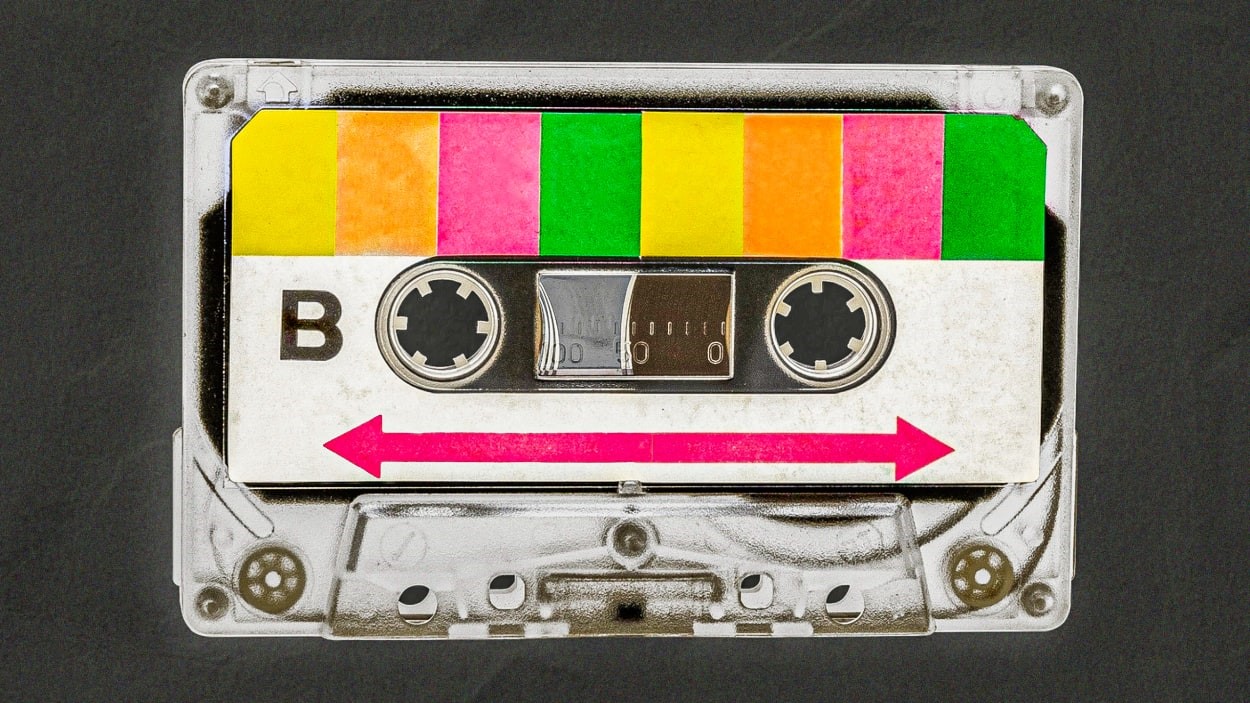Five numbers that will define the music industry in 2024
The music industry had an eventful 12 months. Taylor Swift and Beyoncé undertook massive tours that broke records and brought people to movie theaters. Vinyl was the most popular physical medium in the U.S. for the first time since the Reagan administration. Gen AI appeared on the scene (looking a bit like Drake and the Weeknd). And streaming services finally started to change how they pay artists.
To understand the trends and changes that are shaping the industry, the entertainment industry analytics firm Luminate publishes a year-end music report. As the data provider behind Billboard’s charts, the firm has a nearly 360-degree view of the music industry, with access to streaming numbers and sales of physical media and merchandise. The company’s 2023 report, released earlier this week, covers everything from the surge in physical media sales to the music genres (and subgenres) that are pulling in new fans. These five stats help explain what music looked like in 2023—and where it might be headed.
103,500: Tracks uploaded daily to streaming services
Every day last year, according to Luminate, an average of 103,500 tracks were uploaded to streaming services—surpassing 2022’s average of 93,400. Luminate uses something called an ISRC code to keep tabs on tracks, which are not the same as songs: One song may have multiple tracks associated with its various versions (e.g., the explicit and non-explicit versions will have separate ISRC codes).
While more tracks might seem like a boon for listeners, many of these tunes end up on the junk heap. When Luminate looked at 184 million ISRCs, it found that 43% of them, or 79.5 million, had 10 or fewer streams over the course of 2023—including 45.6 million that had zero streams. A much smaller number—436,000 tracks—were streamed a million or more times globally, and nearly 50 million had between 101 and 100,000 streams.
This disconnect between low- and high-performing songs—as well as the fact that some of the low-stream songs are AI-generated soundscapes that have been created specifically to game the system—has led music labels to push streamers toward new payment models that establish minimum monthly or yearly stream counts.
Deezer was the first to adopt such a strategy. In September, it implemented a framework, created with Universal Music Group, that boosts royalties for songs with more than 1,000 monthly streams from 500 unique users. This year, Spotify is moving toward requiring an artist to receive 1,000 streams a year to begin receiving royalties (1,000 streams is currently worth roughly $3).
Though this change will mean that tracks with low stream counts won’t get payouts, Spotify has said that it’ll only change how 0.5% of its royalty pool—about $46 million—gets allocated. That money will instead be directed toward the 99.5% of tracks that meet the streamer’s annual threshold.
Over the past few years, labels and artists have made it clear that the streaming model needs adjustments to pay them better. These changes are a start, though how they’ll impact smaller artists will be a hot topic in 2024.
6.8 million: Vinyl records sold directly by artists
Streaming remains the main place for artists to build a following. But when it comes to making money, physical media—particularly vinyl—is playing an increasingly prominent role.
In 2023, artists sold 11.8 million physical media items directly to their fans—38% more than the year before. Those sales—made through an artist’s or label’s website, rather than a retail outlet or music site—include 134,000 cassettes (down slightly from 2022); 3.9 million CDS (up by half a million units over 2022); and 6.8 million vinyl records (up 40%, year over year). Overall, across DTC and retailers, listeners bought 87 million physical albums across cassettes, CDs, and vinyl.
One artist accounted for an outsized portion of that bump: Taylor Swift. Of the top 10 vinyl albums sold in 2023, Swift occupied half of those spots, including the pole position for 1989 (Taylor’s Version), which sold 1.01 million copies in the U.S. when it was released in early November. It also sold 800,000 CDs in the U.S..
Physical media is an important part of how all artists connect with fans—not just the Taylor Swifts of the world. On Bandcamp, for example, vinyl makes up about 30% of all items sold by the platform’s highest-grossing artists.
With more big artists pressing vinyl, there will likely be increasing demand not just for high-volume pressing plants (like the one Metallica purchased in March 2023), but also on smaller presses that can help independent artists keep records stocked.
1 of every 78: Taylor Swift’s share of U.S. audio streams
Anywhere you look, Taylor Swift was dominant last year. Her Eras tour surpassed $1 billion in revenue in December. She accounted for 1.3% of all songs streamed in the U.S. last year. She led in physical merch sales (see above). And her Taylor Swift: The Eras Tour movie has taken in more than $250 million in worldwide box office receipts.
It’s a singular achievement, driven by her savvy strategy of re-recording and releasing her albums as Taylor’s Versions. But elements of the Swift 2023 playbook are being studied across the industry, with the movie theater as concert venue top of mind.
It wasn’t just Swift that saw big screen success in 2023. Beyonce’s Renaissance film took in more than $43 million at the global box office and A24’s rerelease of the 40-year-old Talking Heads concert film, Stop Making Sense, has surpassed $6 million.
18%: U.S. music listeners who are “super fans”
Luminate defines super fans as listeners who engage with artists and their content in five or more ways, whether it’s by streaming their music, following them on social media, buying albums, buying merch, or purchasing concert tickets.
These active consumers tend to spend 126% more on artist merchandise than average music listeners, and 76% more money on physical music. Overall, super fans spend about 68% more on music every month than the average listener.
Merch sales are particularly strong among fans of Korean and Japanese pop artists. K-pop’s Gen Z listeners spend about $24 monthly on products, while J-pop fans spend about $16 a month on merch—both of which are at least double what the average U.S. listener spends.
Given that super fans are more likely to engage with artists on platforms like Discord and Patreon (J-pop listeners are 230% more likely than the typical listener to engage on both platforms), supplemental content beyond music and even social media will be critical to artists who want to grow their following and connect with their fans.
60%: Growth of regional Mexican music in the U.S.
Spanish-language music grew more than 24.1% in the U.S. last year. It now accounts for 8.1% of U.S. music streams, and six Latin music artists drew upwards of 1 billion streams: Bad Bunny, Karol G, Junior H, Fuerza Regida, Peso Pluma, and Eslabon Armado.
Regional Mexican, though, was the breakout Latin music subgenre, with visible stars like Armado and Pluma (who teamed up for the hit “Ella Baila Sola” in 2023). The genre racked up 21.9 billion streams in the U.S. across video and audio. And while the states with the highest number of regional Mexican listeners track with high Hispanic populations, streamers and social media helped bring the genre to a wider audience last year.
The other genres with the fastest growth in the U.S. were the all-encompassing ‘world music’ category (up 26.2%) and country, whose 23.7% growth in streams was due in part to rising appeal beyond the traditional fandom of boomers who listen on terrestrial radio. Rising stars Luke Combs and Zach Bryan have appealed to both millennials and Gen Z, with millennials gravitating toward Bailey Ziimmerman and Morgan Wallen. And it was Wallen, not Swift, who ultimately ended up with the most-streamed track in the U.S. last year, with his ballad “Last Night.”
(12)



